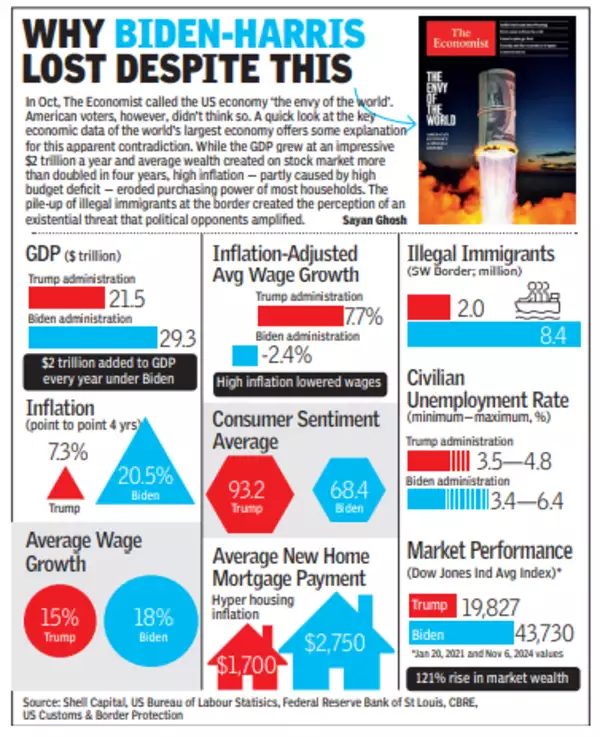
Republicans have been sounding the alarm about the limits of their overwhelmingly white party for more than a decade. To remain competitive for the White House, strategists warn, they need to bring more black, Latino and other voters of color into the fold.
On Tuesday, Donald Trump showed how it can be done.
His victory over Vice President Kamala Harris was decisive, broad and depended on voters in key Democratic areas. The results showed that Trump continued his dominance with White, working class voters Who first advanced his political rise. But he also gained significant influence in the suburbs and cities, and with black voters and Latinos.
Trump’s performance did not suddenly transform the Republican Party into the multiracial coalition of working-class voters that some strategists say is necessary to survive in a rapidly changing country. But he leaned towards it.

At a time when the nation is sharply divided — especially between rich and poor, and between those with and without college degrees — even the incremental changes were enough to put Trump back in power and on track to win the popular vote. Conservative strategists who have pushed the party to broaden its appeal point to the changes as proof of concept. Democrats, who have long relied on the support of minority voters, worry about the trend. “The loss among Latinos is nothing short of devastating for the party,” said Richie Torres, an Afro-Latino Democrat whose district in the Bronx borough of New York City is heavily Hispanic. Torres worries that Democrats are increasingly captive to a “college-educated far left” that threatens to put us out of touch with working-class voters.
There was evidence of Trump’s penetration across the country. In the heavily blue-collar community of Fayette County, Pennsylvania, outside Pittsburgh, Trump won about 70% of the vote, expanding his margin by about 5 percentage points since 2020. nationally, Hispanic-majority counties On average, it has shifted to Trump by 10 percentage points. His gains with black voters were less significant but still notable in smaller communities across Georgia. Hancock, Talbot and Jefferson counties, all majority-black counties with no more than 15,000 people, swung to Trump. The Trump campaign celebrated a victory in Georgia’s Baldwin County, where 42% of the population is black. Republicans hadn’t won the county in decades.
According to exit polls and unofficial returns, Asian-American voters, who make up the fastest-growing eligible electorate in the country, also appear to be drifting away from Democrats. “The power of Trump’s reach into the traditional Democratic coalition of voters of color was astonishing,” said Daniel Hosang, a Yale professor who has written about the rise of right-wing political attitudes among minority groups.
Working-class voters once aligned behind Democrats, while the Republican Party catered to higher-income and business interests. Trump made a point of changing his policies to speak to these new Republican voters: He proposed eliminating the tax on tips. He said he would increase the number of tax cuts. He promised to increase productive employment across the country. Many Latino voters were not turned off by Trump’s radical immigration policies. Polls show that nearly a third of Latino voters support his policies for mass deportation of immigrants without legal status.
The result was a far cry from the party’s infamous “autopsy” report after Mitt Romney’s defeat in 2012, which urged Republicans to adopt more compassionate immigration policies. Instead, Hosang said, the winning formula was closer to what Steve Bannon, Trump’s former chief strategist in the White House, called “inclusive nationalism.”
(TagsToTranslate)Working-Class Voters